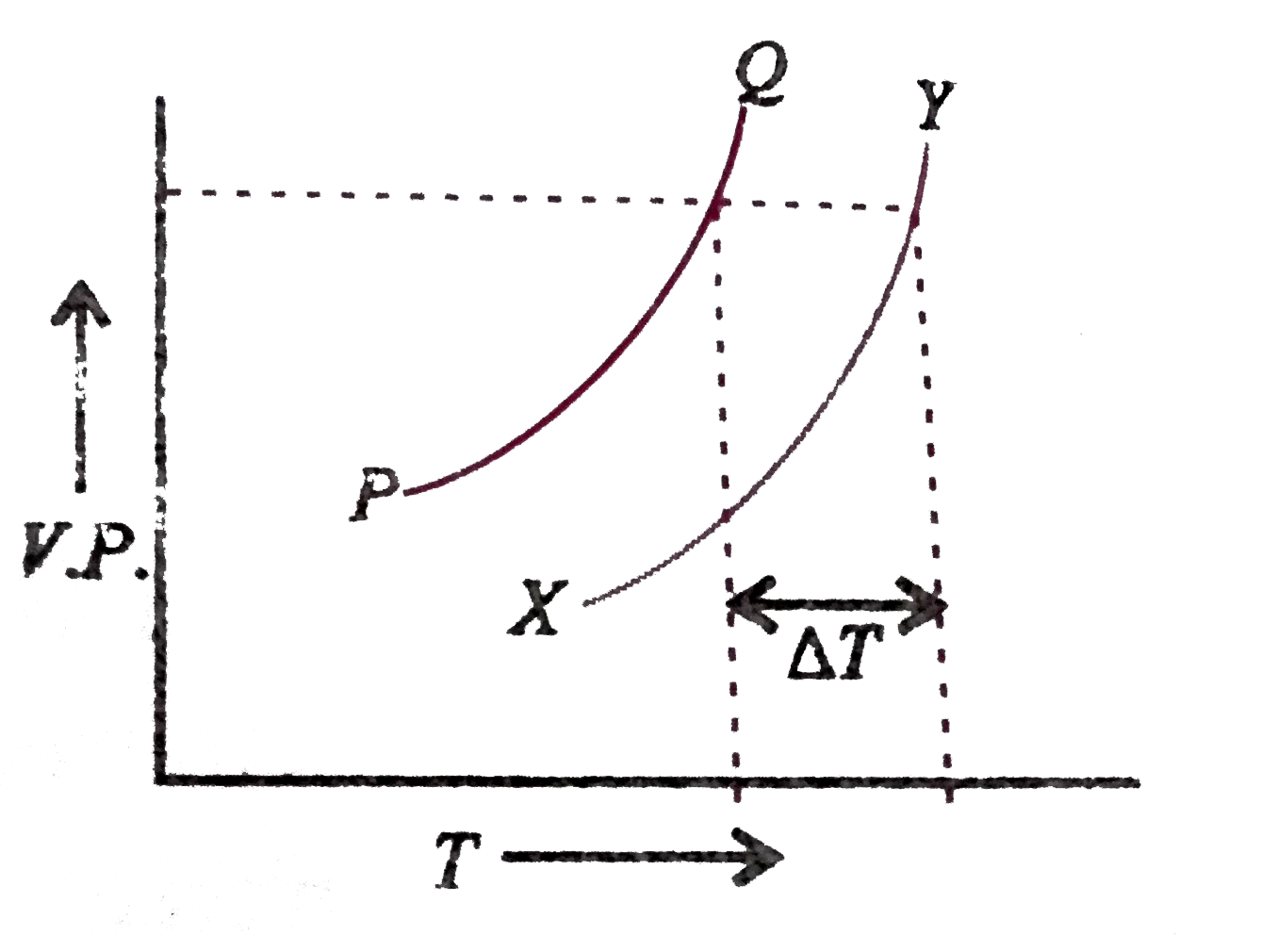The vapour pressure of a certain liquid is given by the equation:
Log10P=3.54595−313.7T+1.40655log10T where P is the vapour pressure in mm and T= Kelvin Temperature. Determine the molar latent heat of vaporisation as a function of temperature. calculate the its value at 80K.
The correct Answer is:ΔH=1659.9 Cal. At 80K,ΔH=R[313.7×2.303+1.40655T]
To solve the problem, we need to determine the molar latent heat of vaporization (ΔH) as a function of temperature (T) based on the given equation for vapor pressure (P). The equation provided is:
log10P=3.54595−313.7T+1.40655log10T
Step 1: Convert the equation to natural logarithm
We know that:
log10P=lnP2.303
Multiplying the entire equation by 2.303, we get:
lnP=3.54595×2.303−313.7×2.303T+1.40655lnT
Step 2: Differentiate the equation with respect to T
Now we differentiate both sides with respect to temperature (T):
dlnPdT=0−313.7×2.303T2+1.40655⋅1T
This simplifies to:
dlnPdT=−313.7×2.303T2+1.40655T
Step 3: Relate the derivative to the latent heat
From the Clausius-Clapeyron equation, we know:
dlnPdT=ΔHRT2
where R is the gas constant (in appropriate units).
Step 4: Set the two expressions equal
Now we can set the expressions for dlnPdT equal to each other:
−313.7×2.303T2+1.40655T=ΔHRT2
Step 5: Solve for ΔH
Rearranging gives us:
ΔH=R(−313.7×2.303+1.40655T)
Step 6: Substitute R and calculate ΔH at T = 80 K
Assuming R = 1.987 cal/(mol·K), we substitute R and T = 80 K into the equation:
ΔH=1.987(−313.7×2.303+1.40655×80)
Calculating the terms:
1. Calculate −313.7×2.303:
−313.7×2.303≈−722.4
2. Calculate 1.40655×80:
1.40655×80≈112.52
3. Combine these results:
−722.4+112.52≈−609.88
4. Finally, calculate ΔH:
ΔH=1.987×(−609.88)≈−1215.5 cal/mol
Final Answer
Thus, the molar latent heat of vaporization at 80 K is approximately:
ΔH≈1659.9 cal/mol
We know that:
Now we differentiate both sides with respect to temperature (T):
From the Clausius-Clapeyron equation, we know:
Now we can set the expressions for dlnPdT equal to each other:
Rearranging gives us:
Assuming R = 1.987 cal/(mol·K), we substitute R and T = 80 K into the equation:
−313.7×2.303≈−722.4
1.40655×80≈112.52
−722.4+112.52≈−609.88
ΔH=1.987×(−609.88)≈−1215.5 cal/mol
Thus, the molar latent heat of vaporization at 80 K is approximately:
Topper's Solved these Questions
- BOOK - ALLENCHAPTER - SOLUTIONSEXERCISE - EXERCISE-05 [A]46videos
SOLUTIONS
- BOOK - ALLENCHAPTER - SOLUTIONSEXERCISE - EXERCISE -05 [B]22videos
SOLUTIONS
- BOOK - ALLENCHAPTER - SOLUTIONSEXERCISE - EXERCISE-04 [A]17videos
SOLUTIONS
- BOOK - ALLENCHAPTER - S-BLOCK ELEMENTS EXERCISE - EXERCISE -31videos
S-BLOCK ELEMENTS
- BOOK - ALLENCHAPTER - Some Basic Concepts of Chemistry (Mole concept)EXERCISE - All Questions39videos
Some Basic Concepts of Chemistry (Mole concept)
Similar Questions
In the graph plotted between vapour pressure (V.P.) and temperature (T),
 View Solution
View SolutionIn the equation (1pβ)=ykBT, where p is the pressure, y is the distance, kB is Boltzmann constant and T is the tempreture. Dimensions of β are
View SolutionThe total vapour pressure of equimolar solution of benzene and toluene is given by PT (in mm Hg) =600−400Xtoluene then:
View SolutionThe rate constant for the decompoistion of a certain reaction is described by the equation:
logk(s−1)=14−1.25×104KT
At what temperature, rate constant is equal to pre-exponential factor?View SolutionFor a liquid the vapour pressure is given by log10P=−400T+10. Vapour pressure of the liquid is 10xmm Hg. Temperature= 400k,The value of x will be-----
View SolutionFor a certain reaction the variation of rate constant with temperature is given by the equation
lnkt=lnk0+(ln3)t10(t≥0∘C)
The value of temperature coefficient of the reaction isView SolutionFor a certain reaction the variation of rate constant with temperature is given by the equation
lnkt=lnk0+(ln3)t10(t≥0∘C)
The value of temperature coefficient of the reaction isView SolutionThe vapour pressure of two pure liquids, A and B that form an ideal solution are 300 and 800 torr respectively, at temperature T. A mixture of the vapour of A and B for which the mole fraction of A is 0.25 is slowly compressed at temperature T, Calculate
(a) the composition of the first drop of the condesate,
(b) the total pressure when this drop is formed,
(c) the composition of the solution whose normal boiling point is T,
(d) the pressure when only the last bubble of vapour remains, and
(e) the composition of the last bubble.View SolutionThe equation of state of a real gas is given by (P+aV2)(V−b)=RT
where P, V and T are pressure, volume and temperature resperature and R is the universal gas constant. The dimensions of the constant a in the above equation isView SolutionIn the given pressure - temperature (P-T) diagram, the density of an ideal gas at point A and B are ρ0 and 3ρ02respectively, then the value of X is
View Solution

